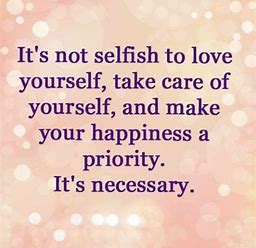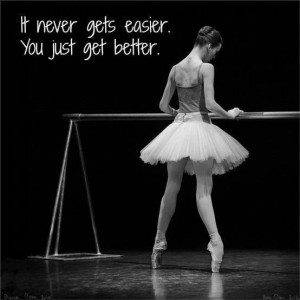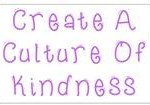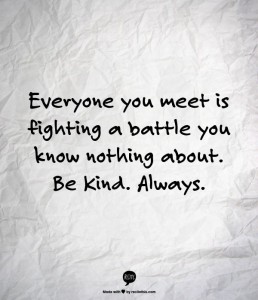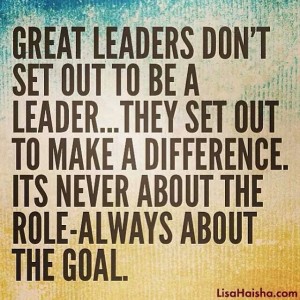COVID-19 WAGE SUBSIDY FAQ’S
Updated 26/08/21
• Can my business stay open during alert level 4?
It is up to the business to check whether they meet the definition of an Alert Level 4 business or service. Workplaces can only open if:
– they are an Alert Level 4 business or service as defined in Schedule 2 of the COVID-19 Public Health Response (Alert Level Requirements) Order (No 9) 2021 (Order), or they are exempt from the Oder. AND
– they are operating safely, in accordance with the Alert Level 4 requirements set out in the order.
Operating safely includes fulfilling all other Health & Safety obligations. This means that if an Alert Level 4 service cannot operate safely, workers must not go to work and premises should remain closed.
• My business is required to remain closed during Alert Level 4. How much should I pay my employees during this time?
Employers must pay employees as if they were in continuous employment.
If employers cannot operate their business due to COVID-19 alert level restrictions, employees must receive their full pay unless otherwise agreed by both parties in writing.
You may be able to access the COVID-19 Wage Subsidy to help continue paying your employees’ wages.
• Do I have to tell my employees that I am applying for the wage subsidy?
Yes, because it is good faith but as part of the application you must have discussed this application with the employees named in it and the employee must have consented to a number of matters recorded in the declaration:
– the information about them in your application being provided to the MSD; and
– you providing the MSD with any further information about them required in order for the MSD to make decisions about your application, and to audit and review any subsidy that is granted (to you or to another applicant) and how any subsidy is granted and paid to employees; and
– you advising the MDS if they end their employment relationship with your business at a time when you are receiving a subsidy with respect to them
• Do I need to do anything to start paying my employees 80% of their normal wages?
Yes! You must consult and act in good faith. You must put a proposal to the employee and try to get their agreement. You cannot unilaterally vary any terms and conditions of their employment including their remuneration.
The granting of a wage subsidy (or COVID-19/Government Alert Levels) does not override an employers’ existing obligations under the Employment Relations Act 2000.
An employer cannot make any changes under any employment agreement, including to rates of pay, hours of work and leave entitlement, without written agreement of the relevant employee.
• I run an essential business or service, so can operate during Alert Level 4. Can my employee choose not to work?
If you can operate your business during Alert Level 4, and your employees choose not to work (for whatever reason), these employees are not entitled to payment.
However, they may ask to be paid sick leave and/or annual leave and/or any Government subsidy available. All arrangements should be agreed by both parties, in writing.
• Can I require employees to take annual leave if they are getting the wage subsidy?
You cannot unlawfully compel or require any of the employees named in your application to use their leave entitlements for the period you receive the wage subsidy in respect of those employees.
In cases where you agreed to pay only 80% of an employees’ wages, some employees may choose to top up their wages to 100% by using their annual leave entitlements.
• What happens if my part-time employee only works 10 hours per week? What happens to the balance of the wage subsidy?
The wage subsidy is designed to support employers throughout New Zealand, so they can continue to pay employees and protect jobs for businesses affected by COVID-19.
If you employees’ ordinary wages are lawfully below the amount of the part time subsidy amount ($359/week), then you can use the balance of the wage subsidy for other affected staff – i.e. to top up for other full-time employees’ wages.
• Can I apply for the wage subsidy for casual employees?
Yes, you can if your business meets the eligibility criteria to apply for the wage subsidy and provided the casual member of staff would have been expected to work during the time you will receive the wage subsidy.
• My casual employees work variable rates. How do I work out whether they qualify for the part-time or full-time subsidy?
You should average their hours out over the last year.
If this average is 20 hours or more, you can apply for the full-time rate, if it is under 20 hours the part-time rate.
If they have worked for less than a year, you should average the hours worked during their total employment period.
• I’ve heard that I only need to make my ‘best efforts’ to pay my employees 80% of their normal wages, what does that mean?
Remember, the wage subsidy does not override employment law. Therefore, employers should be paying 100% of the employee’s normal wages.
Normal wages = the wages specified in the employee’s employment agreement.
But, if 100% is not possible, then 80% is the desired outcome. You must try your absolute hardest to pay 80% which you can only do so after you have consulted in good faith and gained an agreement from your employee in writing.
NOTE: We recommend all employers review the declaration thoroughly prior to applying for the Wage Subsidy. If you are unsure, please contact us to discuss your situation.
• What happens if my employee does not agree to only receiving 80% of their normal wages?
As above, the wages subsidy does not override employment law. If the employee does not agree to the reduction, you are obliged to pay them 100%.
If this is not possible, a restructure-type process will need to be undertaken, whereby you consult staff on a proposed change (providing rationale/justification), seek and genuinely consider their feedback, then make a final decision.
We strongly suggest you seek advice before going through a restructure process. It is vital you follow the process outlined in the employee’s employment agreements. Any restructures will be subject to significant scrutiny by the Employment Relations Authority should a dispute arise.
• Can I pay annual leave on top of the wage subsidy?
Yes, if that is what the employee wants and asks for.
Note that annual leave is calculated based on the greater of Average Weekly Earnings (AWE) or Ordinary Weekly Pay (OWP).
If the employee is in receipt of the wage subsidy their OWP = $600 (Full time employee) or $359 (Part-time employee), not their normal pre COVID wages.
So, they may see a lesser amount than what they were expecting.
• I already applied for the wage subsidy, but only for some of my employees. Can I make another application for my remaining employees?
Yes. You can make an additional application for any of your employees whom you haven’t already applied for.
• Can I tell my employees to use their annual holidays (annual leave)?
Annual leave is defined in the Holidays Act 2003 as being for rest and recreation purposes.
When annual holidays are to be taken by the employee, it should be done by agreement.
You can’t tell your employees to take annual leave to cover a downturn in business caused by COVID-19 unless otherwise agreed by the employees in writing.
If you and your employee cannot agree on when the annual leave is to be taken, and you have given the employee 14 days’ notice, you can make the employee take leave.
• Can I stop my employee from using their annual leave?
People have important and legitimate responsibilities, personal or otherwise. An employer must allow an employee to take annual holidays within 12 months after the date on which the employee’s entitlement to the holidays arose.
If an employee wants to use their entitled annual leave, employers can’t unreasonably refuse this.
An employer can say no if an employee wants to take annual holidays in advance.
• I have an employee who works part-time for me and part-time somewhere else. Can I get a wage subsidy for that employee if they are already receiving one?
Yes. An employee who is employed by two or more businesses, can receive the wage subsidy from multiple employers, as long as the usual criteria are met.
• One of my staff members resigned prior to lockdown, and was due to finish working for me during the lockdown period. Can I still apply for the wage subsidy for that person?
Yes. Subject to the business eligibility criteria, you can apply for the wage subsidy for the period that the employee remained employed by you.
• How should I treat an employee who now wants to withdraw their resignation?
If an employee has resigned and later seeks to withdraw or rescind that resignation, you can choose to accept their request, but are not obliged to.
In considering whether to agree, you should weight up whether doing so would impact others (such as where arrangements have been made to fill the position).
Even where arrangements to fill the vacancy have been made, you may be able to retain the employee in an alternative position.
• I had just recruited a new staff member prior to lockdown. He was contracted to start work with us on 23/08/21 (during the lockdown period) but we are non-essential and have to remain closed during lockdown. What are my obligations here?
If you have a signed Individual Employment Agreement, you are bound by the terms and conditions of that agreement. So, unless otherwise agreed in writing by all parties, you must treat that person as an employee of your business. Assuming you meet the eligibility criteria for the wage subsidy, you can apply for the wage subsidy for that employee from the date he was to be employed (23/08/21).
• How should we treat fixed-term employees whose employment agreements are due to expire during an alert level that requires them to stay home?
You should consider whether you were likely to have extended this, if the workplace restrictions had not been in place.
In many cases the reason for the temporary appointment remains, so an extension would be appropriate (i.e. the project they were hired for is yet to be completed).
Or you can consider whether you may be able to redeploy existing employees to fill this need.
Otherwise, the fixed term can be allowed to expire, subject to necessary notice having been provided.
• How many hours of work should I provide my employees during Alert Level 4?
Under employment law, employees must be paid for each and every hour that they work at their agreed wage rate. If you can operate your business, you must offer your employees work as usual and according to their employment agreements. If you cannot offer them work, you must pay them their full pay, unless otherwise agreed to by both parties in writing.
• I am concerned that I cannot meet 100% of my employees’ contracted hours. What should I do?
Employers and employees can temporarily or permanently agree to vary the agreed rates of pay and hours of work. Any change requires good faith consultation and a written agreement signed by both parties.
In most cases if employers cannot pay 100% of the employee’s wages, and employees cannot provide an agreement, employers must follow a restructure-type process, involving consultation and feedback.
• I run an essential business. What can I do if some of my employees say they cannot come to work because they have children to care for during lockdown?
The Ministry of Education has restarted a free childcare programme for children of essential workers in Level 4. This applies to children up to age 13 and is home based care via one of 32 national providers. There are a number of providers across Selwyn, including Selwyn Kids, Busy Bumbles and STEMS.
If an employee chooses not to go to work because they have children to look after at home, then normal employment law/leave provisions apply, despite COVID-19. Depending on the Individual Employment Agreement he/she may apply for annual leave, sick/domestic leave if the child happens to be sick, or he/she may need to take unpaid leave. Some employers may opt to pay ‘Special Leave’ depending on the circumstances.
• Can I use the wage subsidy I receive for a named employee to pay other outgoings such as rent?
No. When you apply for the wage subsidy you also declare that you will only use the subsidy for the purposes of meeting your named employee’s ordinary wages and salary.
However, you may apply for the Resurgence Support Payment (RSP) if your business meets the eligibility criteria (e.g. expected 30% decline in revenue). The RSP is a payment to be used to help cover business expenses such as wages and fixed costs, and is available to apply for through the IRD.
• Can I make someone redundant after applying for the wage subsidy?
The wage subsidy is designed to support employers throughout New Zealand, so they can continue to pay employees and protect jobs for businesses affected by COVID-19.
If you applied for and received a wage subsidy, you cannot make named employees in your application redundant for the duration of the wage subsidy.
If you are considering a restructure/redundancy process, we suggest you seek advice.
• Can I make my employees redundant during lockdown?
Yes, subject to there being a substantive justification, and the employer following a fair and reasonable process, including consulting with the employees before making any decisions.
However, as above, if you applied for and are receiving the wage subsidy, you cannot make named employees in your application redundant for the duration of the wage subsidy.
• Is is possible that my business will have to repay any part of the subsidy?
Yes, you agree to repay the subsidy or any part of the subsidy paid to you if you:
– fail to meet any of the obligations about how you must use the subsidy; or
– were not or stop being eligible for the subsidy or any part of the subsidy;
– provide false or misleading information in your application; or
– receive insurance such as business interruption insurance for any costs covered by the subsidy
• Can I force employees to have a vaccine and wear masks?
Mask wearing is now a public health requirement, so staff in essential services can be required to wear a mask. Non-compliance could result in disciplinary action being justified.
Vaccines are now a compulsory requirement for the employees of employers which fall under the Government Covid-10 Order.
Otherwise, an employer could not generally mandate vaccination unless it was a legitimate requirement of the role for health and safety reasons.
In either of these situations, if an employee refused to be vaccinated, this could potentially lead to a termination of employment if the employer was unable to accommodate reasonable alternative working arrangements
• What if one of my employees won’t comply with the rules and is a risk to others?
If an employee refuses to comply with the rules, for example refuses to wear a mask, then disciplinary action could be taken.
This could include suspending the employee if the non-compliance continues.
Didn’t find the answer you’re looking for here?
For further assistance, or to discuss your specific situation, please feel free to contact Pip for a free and confidential chat.
We are ready and available to help both employers and employees.
Pip Simmons LLB, DiSC Certified Trainer
Owner
m: 021 474 736
e: pip@bonafideconsulting.co.nz
w: www.bonafideconsulting.co.nz


